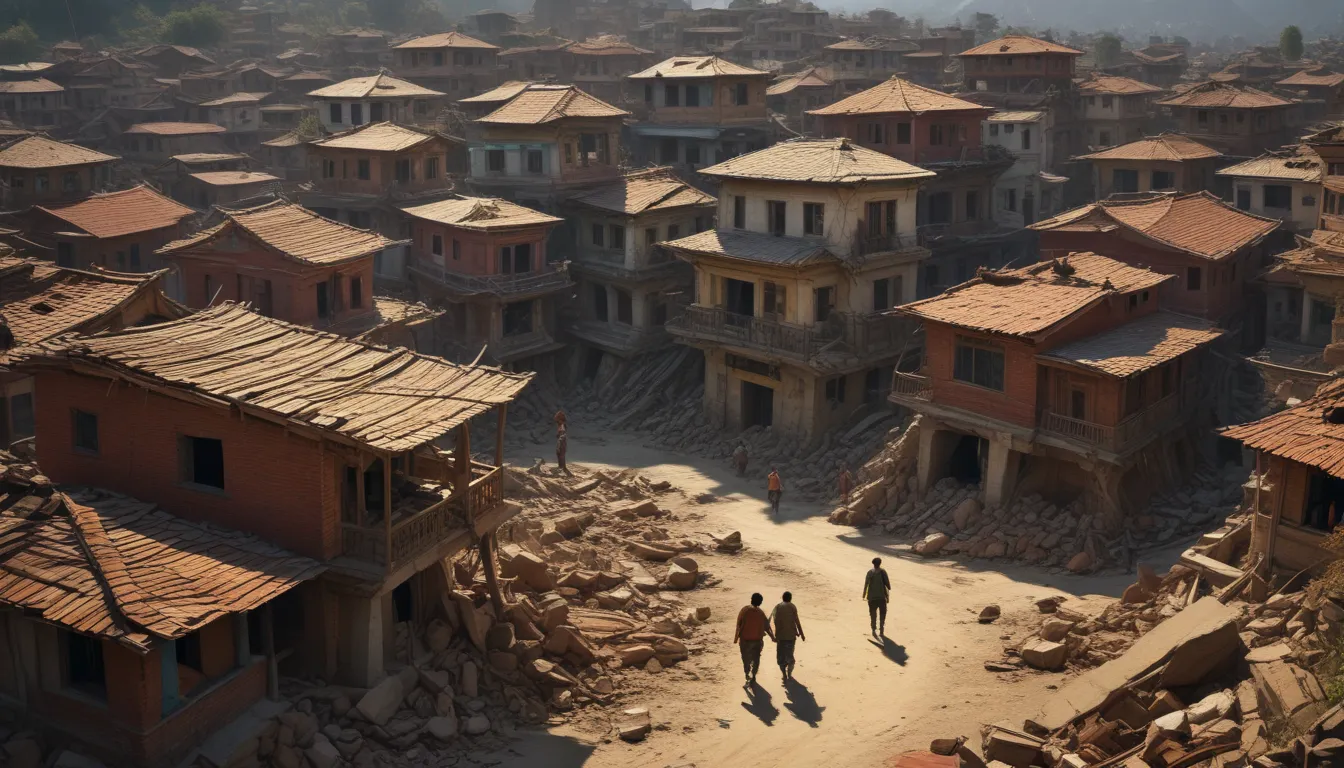The images in our articles may not match the content exactly. They are used to grab your attention, not to show the exact details in the text. The images complement the text but do not replace it.
The 2015 Nepal earthquake, also known as the Gorkha earthquake, stands out as a powerful reminder of nature’s immense force and the unwavering resilience of the human spirit. With a magnitude of 7.8, this seismic event shook the very foundations of Nepal, causing widespread devastation and capturing global attention. In this article, we will delve into the depths of this catastrophic event, exploring its geological origins, impact on Nepal, international response and recovery efforts, as well as the valuable lessons learned in its aftermath.
Understanding the 2015 Nepal Earthquake
On April 25, 2015, Nepal was struck by a massive earthquake with a magnitude of 7.8, centered less than 50 miles northwest of Kathmandu, the capital of Nepal. The seismic waves reverberated across neighboring countries, including India, Bangladesh, Tibet, and Bhutan. The earthquake’s epicenter was located in the Gorkha district of Nepal, unleashing a series of aftershocks, including a significant one measuring 7.3 on May 12, 2015.
Impact on Nepal
The 2015 Nepal earthquake left a profound impact on the country, with over 8,000 people losing their lives and more than 21,000 sustaining injuries. Approximately 2.8 million individuals were displaced, leading to a significant population living in temporary shelters and camps for extended periods. The earthquake also caused extensive damage to Nepal’s rich cultural heritage, including several UNESCO World Heritage Sites in Kathmandu Valley, such as the historic Durbar Squares of Kathmandu, Patan, and Bhaktapur.
International Response and Recovery Efforts
Following the earthquake, countries and international organizations rallied together to extend their support to Nepal. Global aid poured in, encompassing financial assistance, rescue teams, and medical aid to assist in the relief efforts. The government of Nepal initiated a robust reconstruction plan focused on rebuilding homes, schools, and heritage sites with improved resilience to future earthquakes.
Lessons Learned and Preparedness
The 2015 Nepal earthquake reinforced the importance of disaster preparedness and the necessity of constructing buildings that can withstand seismic activities. Nepal took steps to implement stricter building codes to enhance the earthquake resilience of new constructions, alongside community training initiatives on earthquake preparedness and safe building practices.
Scientific Insights from the Earthquake
The earthquake provided valuable data for scientists studying seismic activities and their impacts. Research indicated that the earthquake was triggered by the thrusting of the Indian plate under the Eurasian plate, a geological process shaping the Himalayas over millions of years. The event underscored the potential benefits of early warning systems in mitigating earthquake impacts, spurring interest in developing such technologies in the region.
Personal Stories of Survival and Heroism
Amid the devastation, stories of survival, heroism, and human compassion emerged. Local and international rescue teams worked tirelessly in perilous conditions to search for and save survivors trapped under rubble. Communities across Nepal united in solidarity, sharing resources and providing shelter to those who had lost their homes.
The Path Forward
In the aftermath of the 2015 Nepal earthquake, efforts towards sustainable development, disaster risk reduction, and cultural preservation gained momentum. International cooperation proved essential in disaster response and recovery, showcasing a spirit of global solidarity. Nepal continues to rebuild with ongoing support from the international community to ensure a stronger and more resilient future.
Final Thoughts
Reflecting on the 2015 Nepal earthquake allows us to recognize the power of nature, the resilience of humanity, and the importance of unity in times of crisis. While the earthquake brought immense loss and destruction, it also ignited stories of survival, unity, and rebuilding. The disaster spurred technological advancements in earthquake detection and building design, shaping a safer future for earthquake-prone regions. Let us honor the memory of those affected by strengthening our collective response capabilities and support systems as we continue to learn from the lessons of the 2015 Nepal earthquake.
Frequently Asked Questions
Q: What caused the 2015 Nepal earthquake?
A: The 2015 Nepal earthquake was triggered by the collision of the Indian Plate and the Eurasian Plate, releasing accumulated tension and resulting in the devastating quake.
Q: How many people were affected by the earthquake?
A: Over 8 million individuals experienced the impact of the 2015 Nepal earthquake, with nearly 9,000 lives lost and more than 22,000 individuals injured.
Q: What kind of aid did Nepal receive?
A: Nepal received global aid in the form of financial contributions, rescue teams, medical assistance, and essential supplies to support the relief and recovery efforts.
Q: How did the earthquake affect Nepal’s historic sites?
A: Several UNESCO World Heritage Sites in Nepal, including iconic structures in the Kathmandu Valley, suffered significant damage, emphasizing the need for restoration and preservation efforts.
Q: What lessons were learned from the earthquake?
A: The earthquake underscored the importance of disaster preparedness, resilient building structures, and effective response strategies to mitigate future calamities.
In conclusion, the 2015 Nepal earthquake remains a poignant chapter in the country’s history, symbolizing the collective strength and compassion of humanity in the face of adversity. As Nepal continues its journey towards recovery and resilience, the lessons learned from this catastrophic event pave the way for a safer and more prepared future. Through global solidarity and unwavering dedication, the spirit of Nepal emerges stronger, celebrating the indomitable human spirit and the enduring bond of community in times of need.






